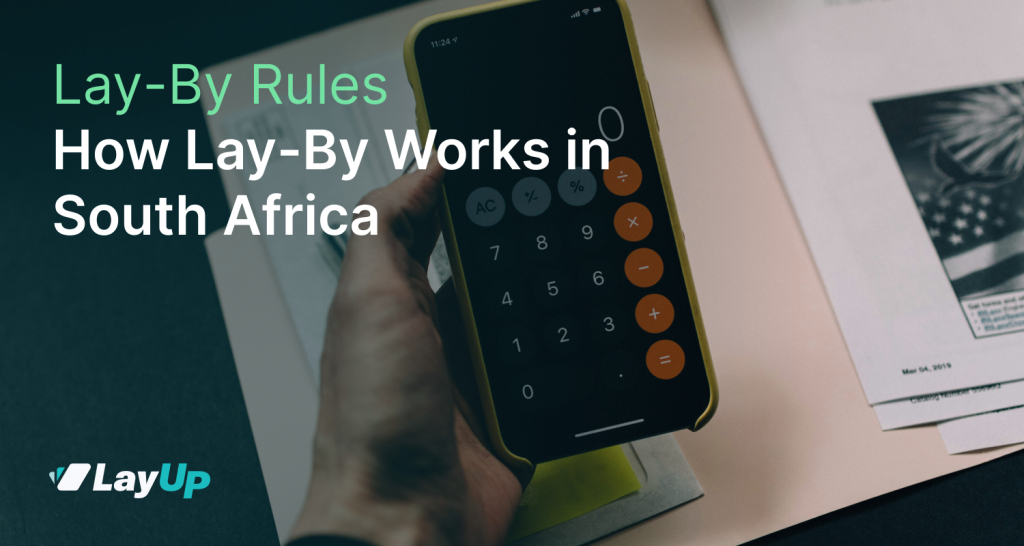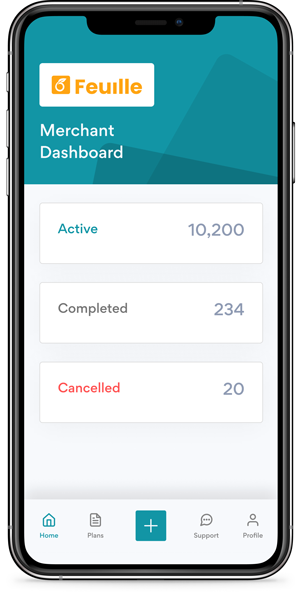We all have our eyes on what we want and need, but sometimes, costliness and the unavailability of funds prevent us from clicking that ‘Checkout’ button.
But there’s a way to get everything you want while being savvy with money.
It’s called the lay-by – simply, the regular contribution of funds toward an oversized ticket item until that item is paid off. And when it is, it’s yours, no questions asked, and no extra debt hanging about.
At LayUp, this is our speciality—we’re the premier facilitator of lay-by options, working with several world-class brands and service providers.
But how does the lay-by work? And more specifically, how does it work in South Africa?
Read on to find out more.
ALSO READ: No Credit Checks: The Lay-by Explained
What Does Lay-By Mean?
Lay-by is a payment method that allows customers to make purchases over time, usually in instalments. The customer pays for the item upfront but does not take it home until all payments have been completed.
In South Africa, lay-by agreements are regulated by the Consumer Protection Act and offer consumers more excellent protection with their purchases. Typically, an order is placed with the retailer, and a deposit of 10-20% of the total cost is paid upfront. The customer then makes regular payments until the full amount is paid off. When the final instalment has been settled, the product will be released to them, and they can take it home or have it delivered. It’s important to note that there are generally no interest or additional service fees associated with lay-by agreements.
Customers can spread their payments using a lay-by method while ensuring they get exactly what they want without running up a large credit card bill. This makes it an ideal way to budget responsibly while making larger purchases.
How Should Payments Be Made?
Lay-by agreements are a popular way of buying goods in South Africa. They allow customers to pay for their purchases over some time, with no interest payments or costly instalments.
The customer and the retailer agree on the total cost of the purchase and how long it will take to pay off the amount due. Depending on the item or service being purchased, this may vary from several weeks to several months. During this period, regular payments must be made at pre-arranged intervals from both parties until full payment is received. In South Africa, it’s essential to keep track of all payments made so that proper records can be kept for tax purposes.
It’s important to note that the purchased item is unavailable until full payment is received. The retailer also has the right to cancel the lay-by agreement if payments are not made on time or in full.
Lay-by agreements can be a great way to purchase goods without paying excessive interest charges, but knowing the terms and conditions before agreeing is essential. This can help ensure both parties understand their responsibilities and how long payments will take.
ALSO READ: Save Now, Buy Later: Join the Debt-Free Shopping Revolution
5 Questions to Ask on the Lay-By Model in South Africa
The lay-by model has become an increasingly popular shop method in South Africa. This model allows people to purchase goods and services over some time instead of paying the full amount upfront. It is an excellent option for those who may not have access to credit or other forms of financing.
But how does lay-by work in South Africa? To help answer this question, here are five key questions you should ask when considering the lay-by model:
1. Does the consumer immediately receive the goods after paying them off?
Generally, when purchasing goods through lay-by in South Africa, you will only receive the product once all instalments have been paid and the total amount has been settled.
2. What happens if a consumer cannot pay for lay-by goods?
In South Africa, suppliers are required to provide consumers with a fixed period of grace during which they may make instalments without penalty or cancel the agreement. This usually ranges between 10 and 30 days before any penalties apply.
3. What happens if a supplier is unable to provide the goods?
Any supplier offering lay-by services must ensure they meet their contract obligations. If they cannot procure or deliver the goods within an agreed-upon timeframe, they must fully refund all consumer payments.
4. Can interest be added to the lay-by amount?
In South Africa, interest may not be added to lay-by transactions. This means that the total cost of an item purchased through lay-by should remain the same as when initially agreed upon.
5. Is it safe to lay-by goods and services online?
While there is always some risk involved when purchasing online, most reputable companies have secure payment systems to protect consumers from fraud or theft. It is crucial to ensure that the website you are using has a valid security certificate before entering any financial details.
What Makes the Lay-By System an Affordable Model?
As shown, the lay-by system is infinitely affordable. It allows consumers to buy goods while making small payments, usually weekly or bi-weekly. This payment plan allows consumers to pay off their purchases slowly without paying any interest fees. Lay-by is especially useful for those who cannot make large upfront payments or secure credit but still want access to the goods they need. Consumers can also use lay-by as a budgeting tool, which helps them save money on items they might not be able to afford outright.
What’s more, the lay-by system can benefit both retailers and consumers. It allows retailers to secure sales before they are paid out while offering consumers a more convenient way to pay for their purchases over a set period.
Lay-by can be a convenient way to purchase items without paying for them upfront or taking out a loan, but it is essential to understand how the process works in South Africa before deciding to use lay-by. Keep these five crucial questions in mind, and you’ll be able to leverage the lay-by to your benefit and get those big-ticket items without incurring unnecessary debt.
Shop now with LayUp, and get the things you want without busting the bank.

